The Allplane Podcast #8 - Designing Executive Jets with Jay Beever
It was a few years ago, on an executive jet flight between Le Bourget and Geneva with a small group of aviation people that I came across Jay Beever’s concepts for corporate jet cabin design.
Art Déco, the Wild West, Manhattan and Kyoto are some of the themes that he and his team at Embraer have come up with in recent years.
In a way, these designs, are akin to those of top fashion designers. They are so outlandish that may never become mainstream, but they set the trends.
In this episode we talk with Jay about the process through which he came up with some of the most original cabin designs in the executive jet industry, about how his previous experience in the automotive industry has influenced his work and also about new ideas Embraer is pushing, such as a personal air mobility vehicle concept and a high end office chair.
If you are interested in aviation, design and, more generally, in beautiful, original things, go get your ear plugs and a calm, quiet place to listen, because you certainly will enjoy this episode!
Download this episode on:
Apple Podcasts / iTunes, Spotify, Google Podcasts or Stitcher
Things we talk about in this episode:
Jay’s professional experience, first as a car and later as an aircraft designer
How car and aircraft design resemble each other
The outlandish concepts Jay and his team have devised for Embraer’s executive jets
How nature is a source of inspiration for future aircraft designs
The Embraer Pulse concept
The new Embraer Paradigma office chair design
Resources
My article on AirInsight about outlandishly themed cabin interiors
How is it like to fly on an Embraer Lineage 1000E executive jet
Harley Earl’s Buick Y-Job (1938) that inspired the Embraer Pulse concept
A CNN piece of mine about cabin interiors the future of the passenger experience
A piece about biomimicry applied to aircraft design
Check out, in the following gallery, some of the amazing cabin interior devised by Jay Beever’s team at Embraer that we have mentioned on the podcast. Here depicted are the Kyoto, Manhattan, Bali, Sky Ranch, Sky Yacht and Hollywood corporate jet cabin interiors.
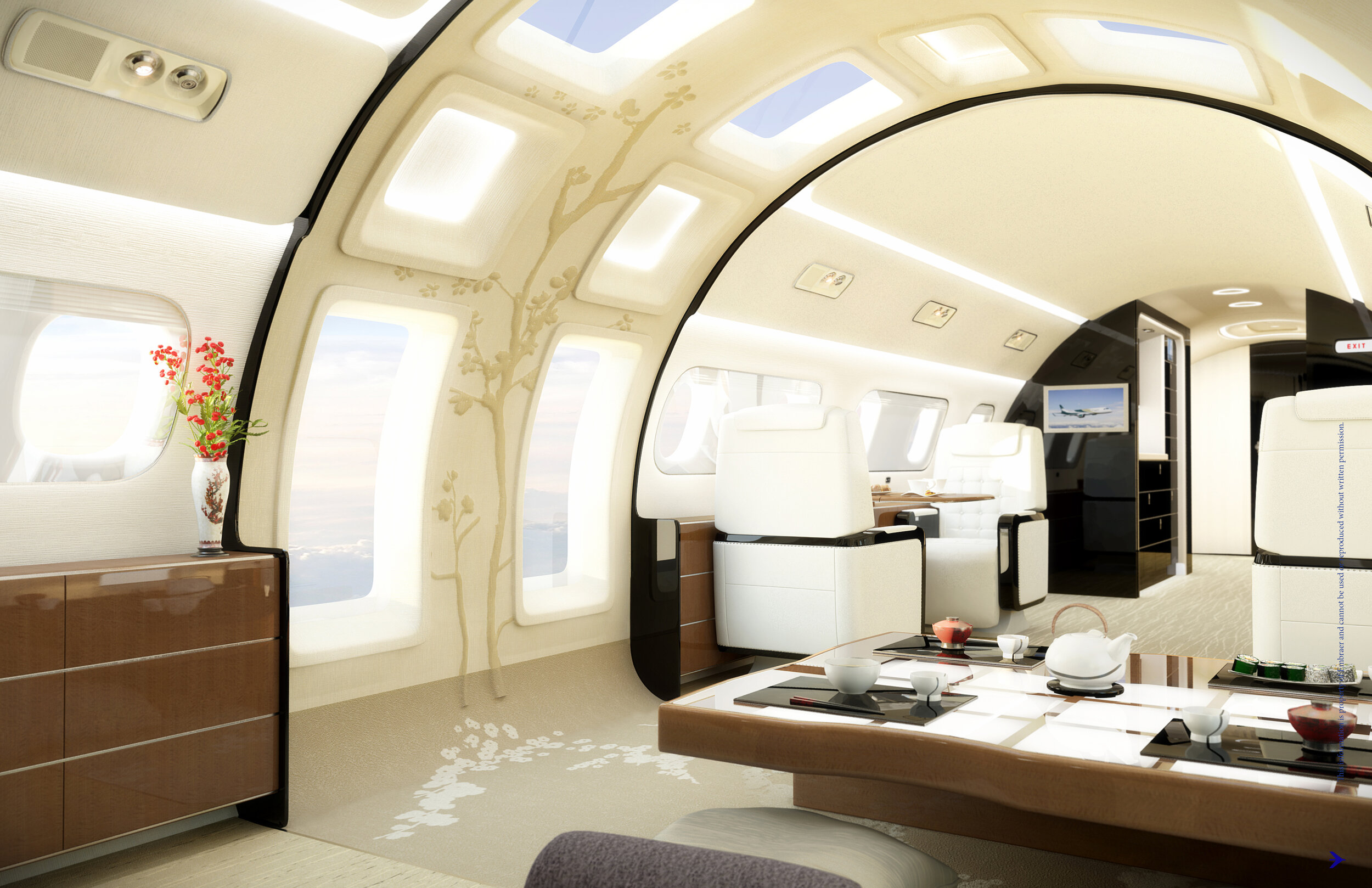
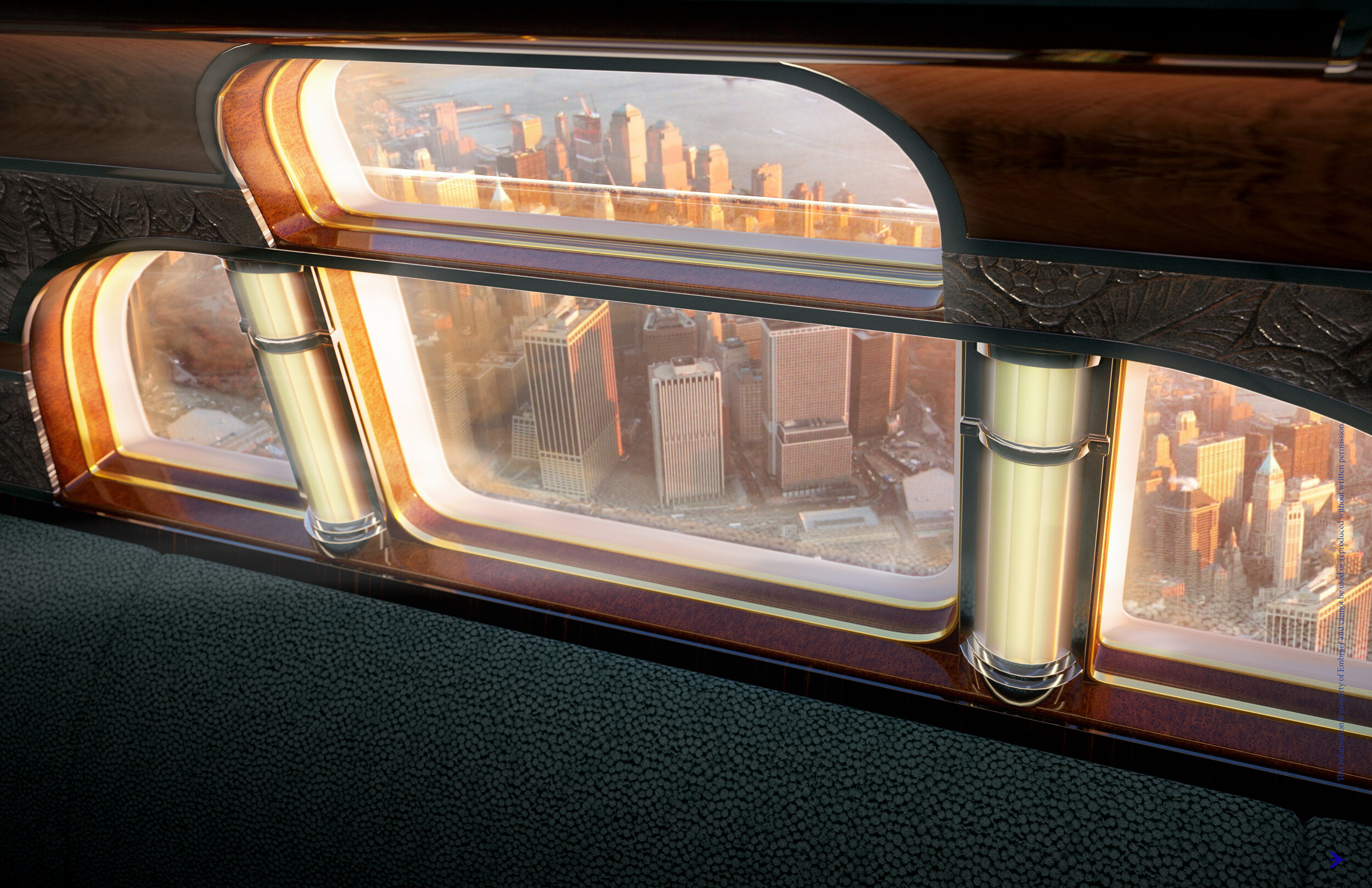
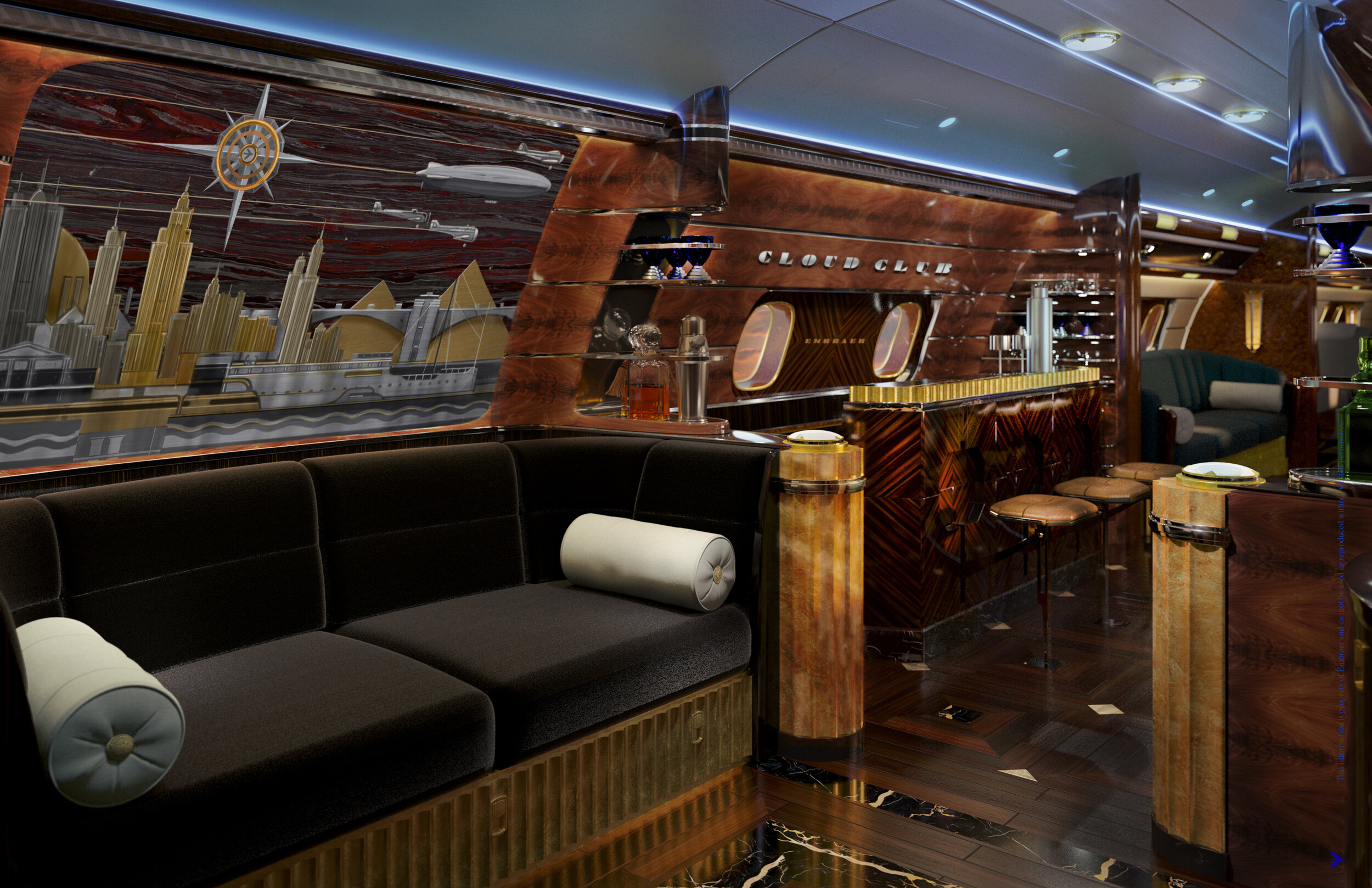
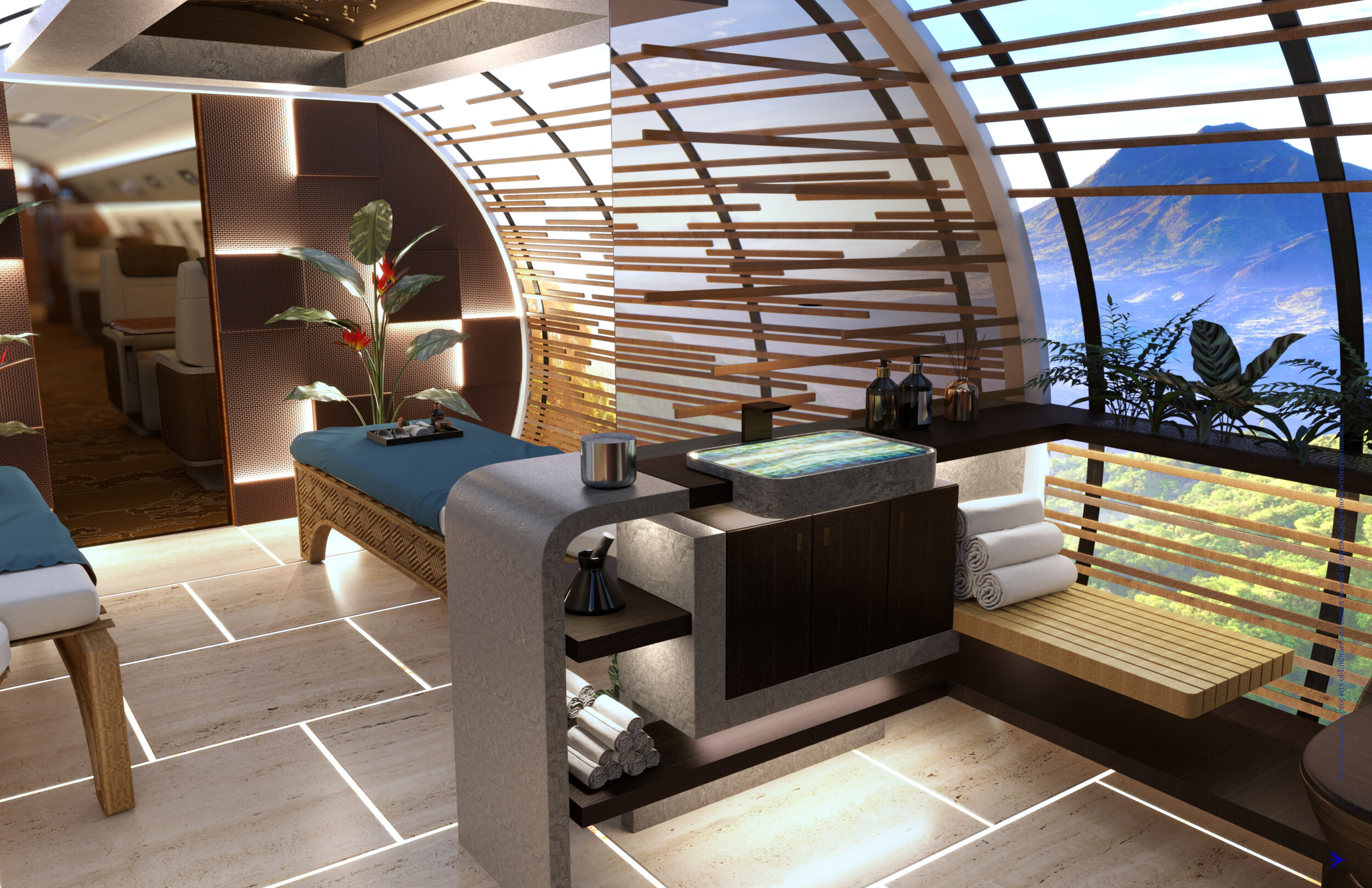
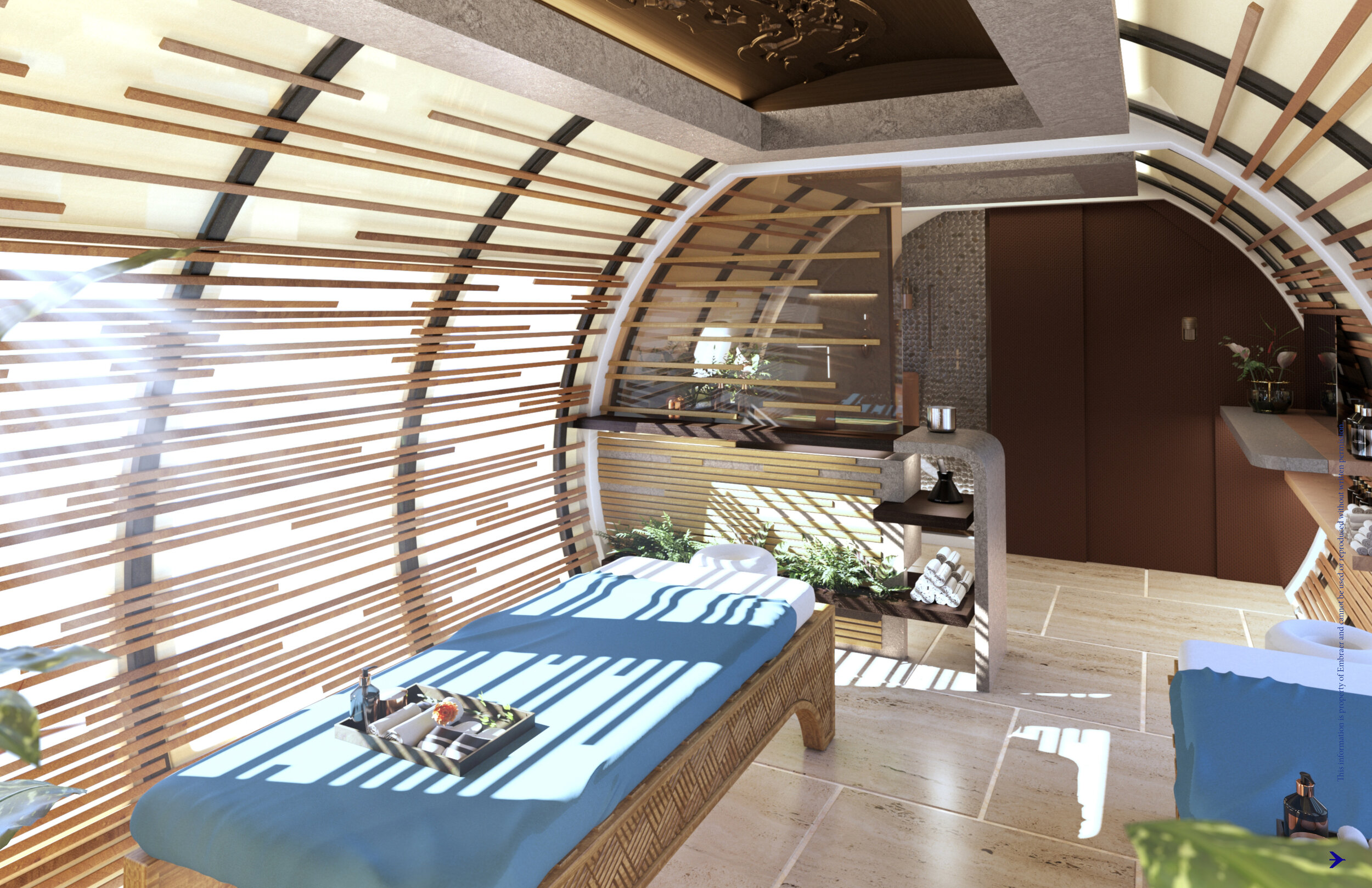
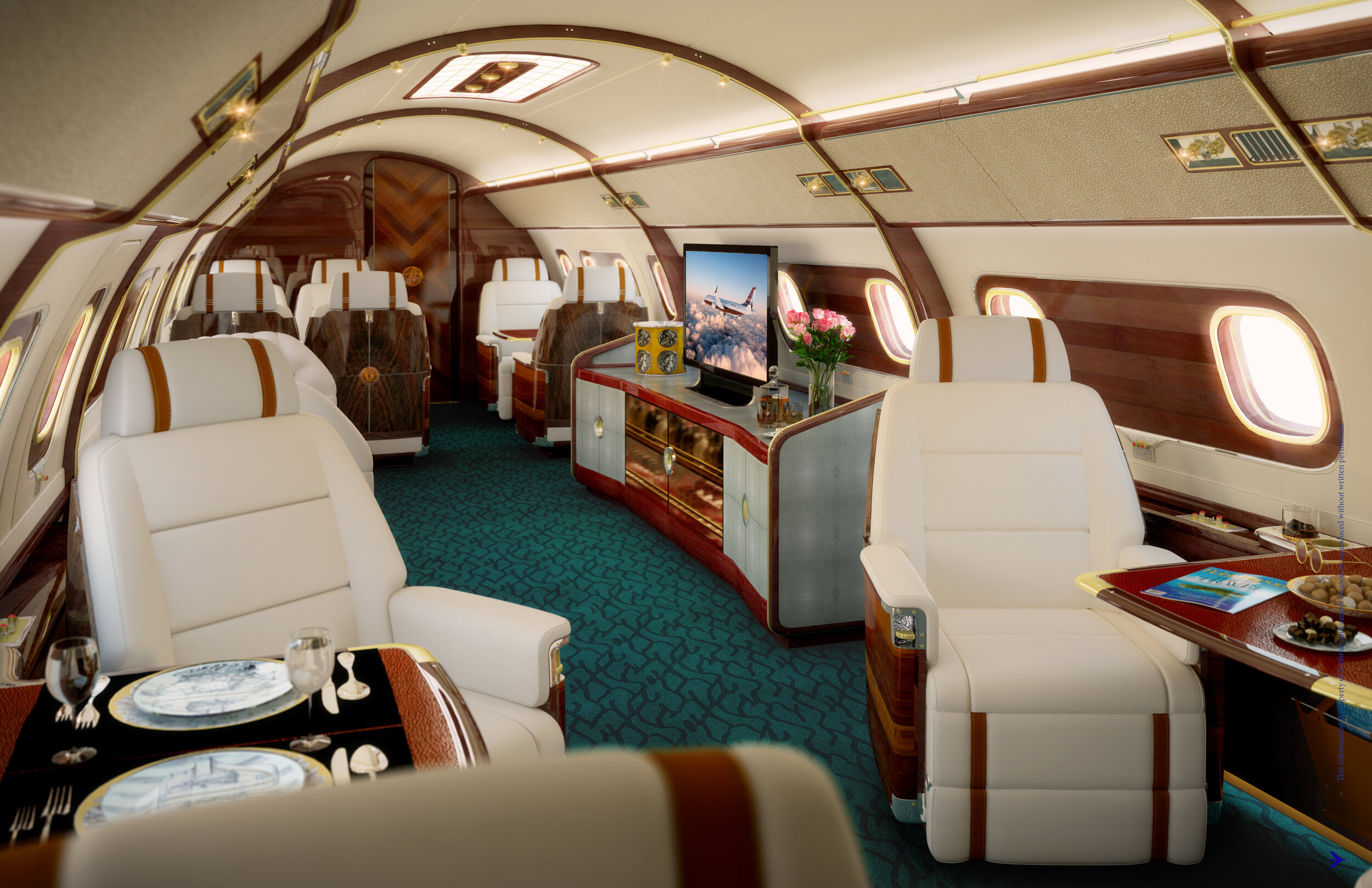
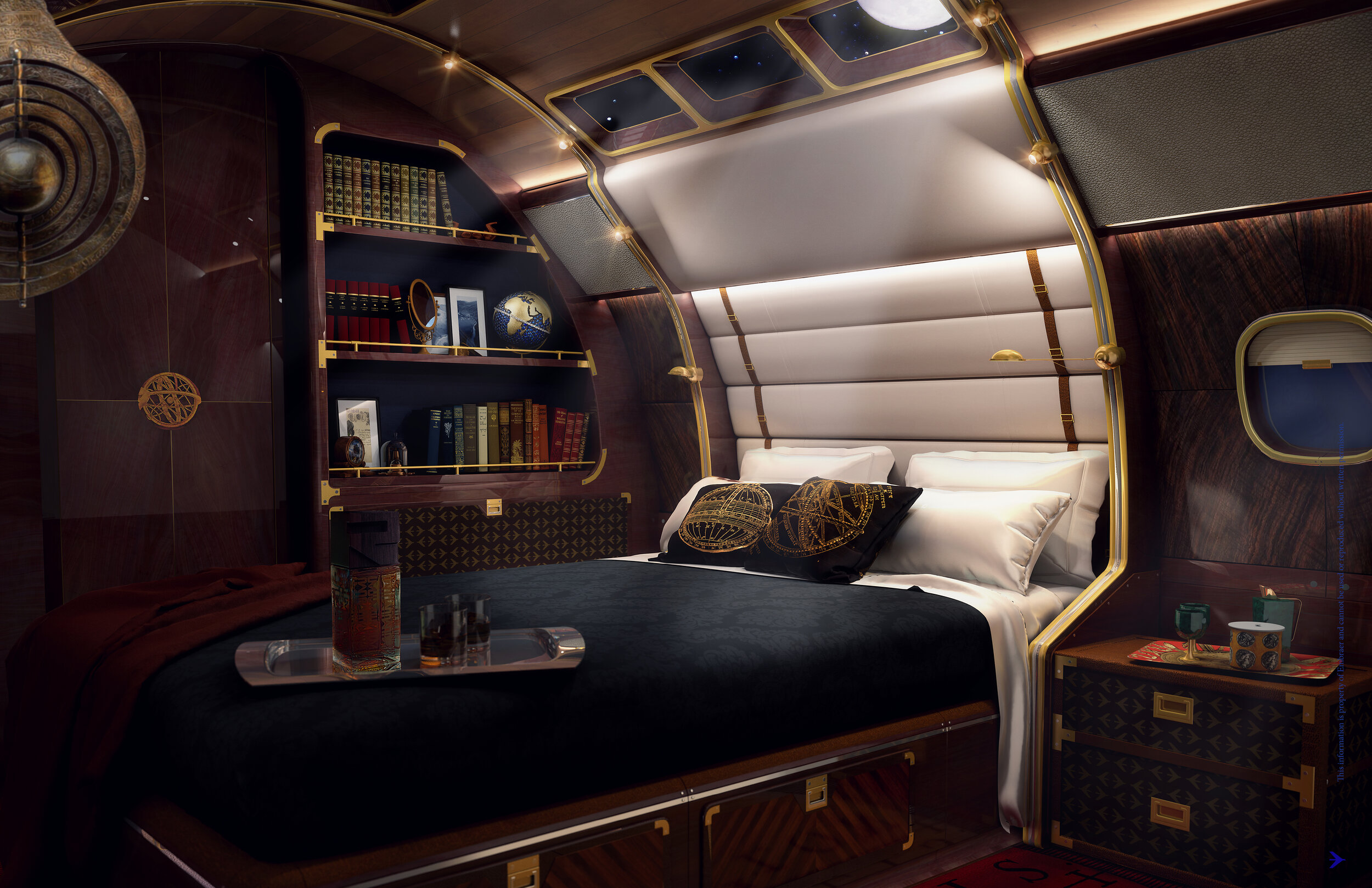
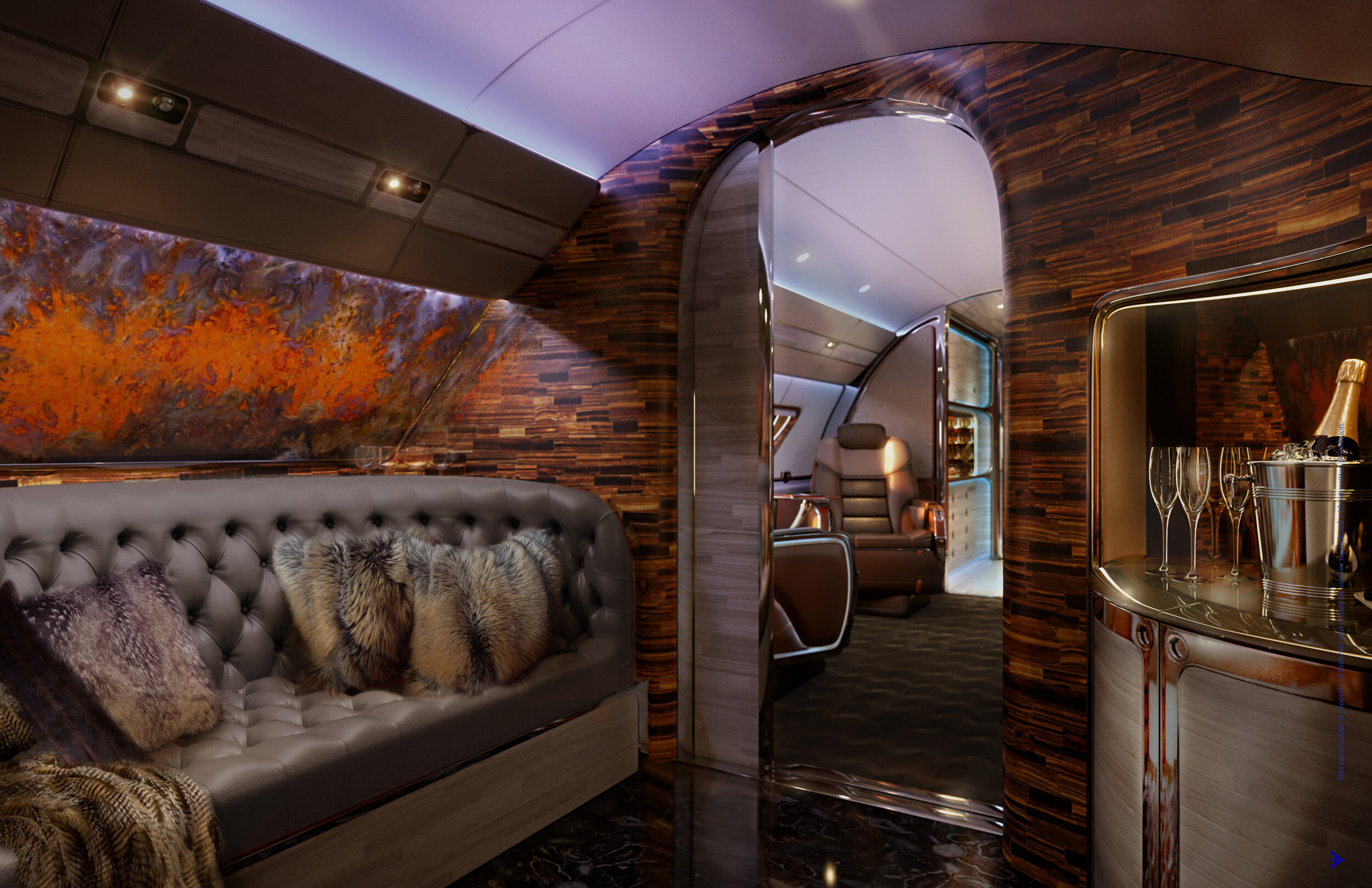
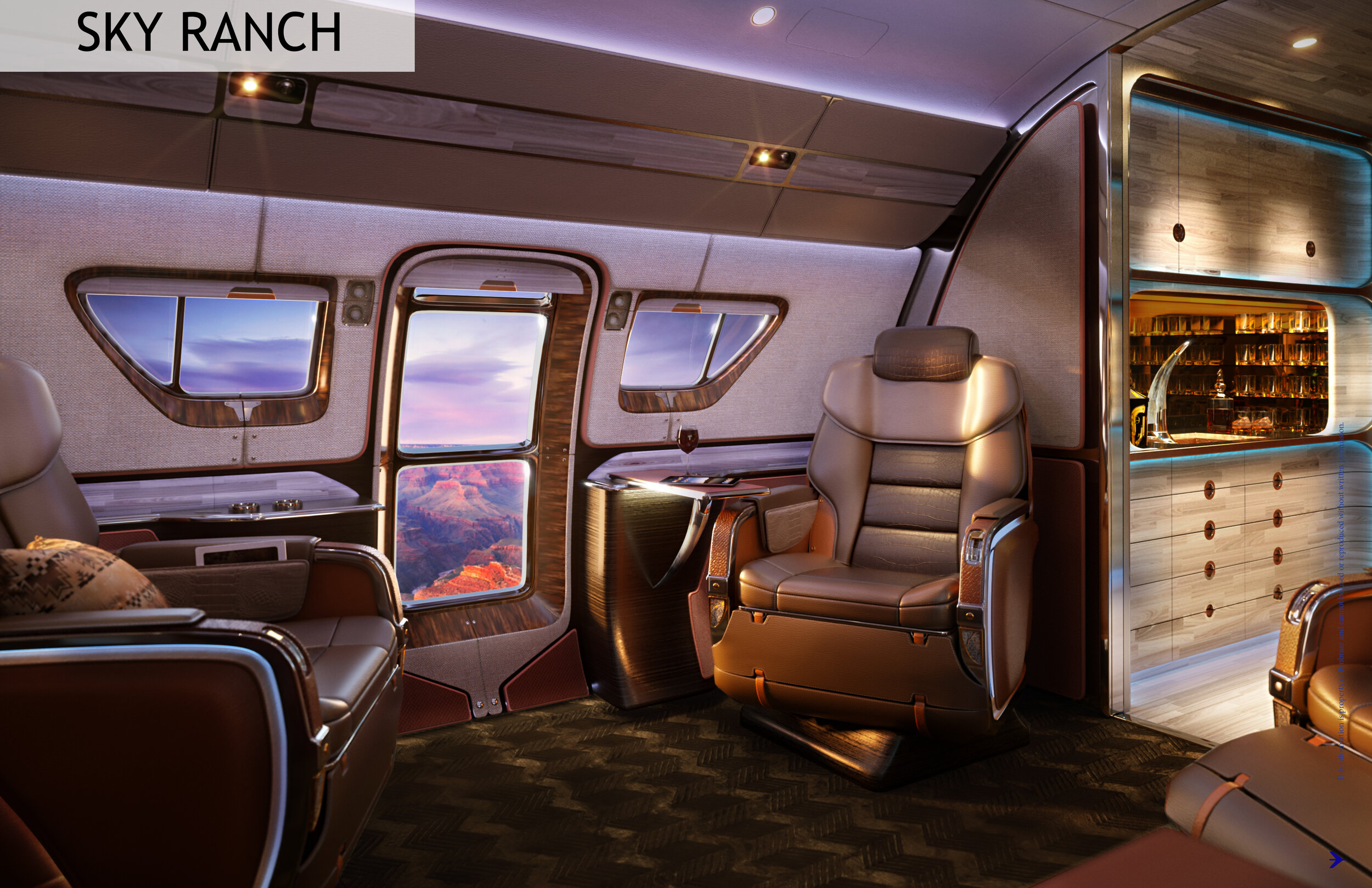
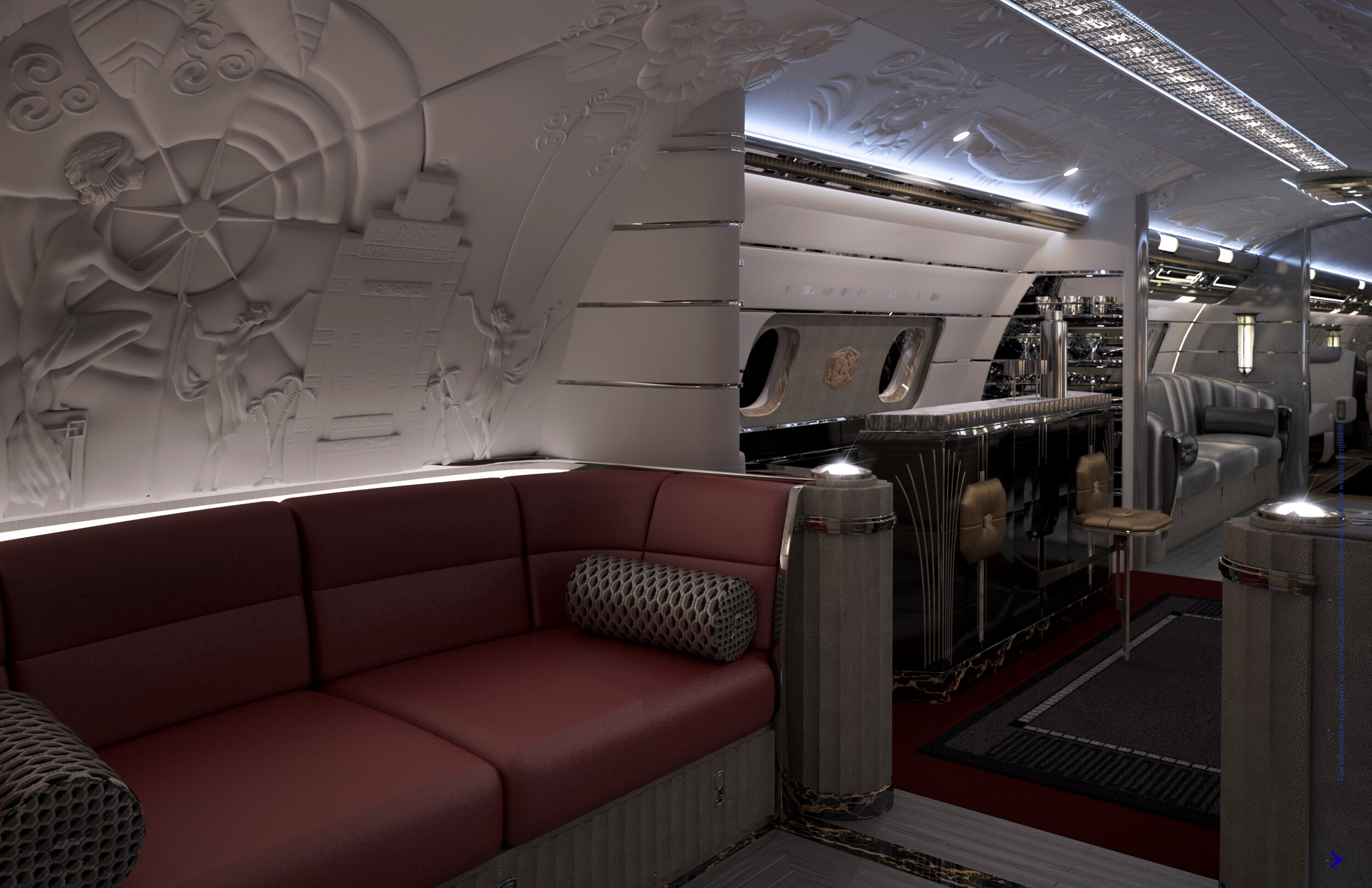
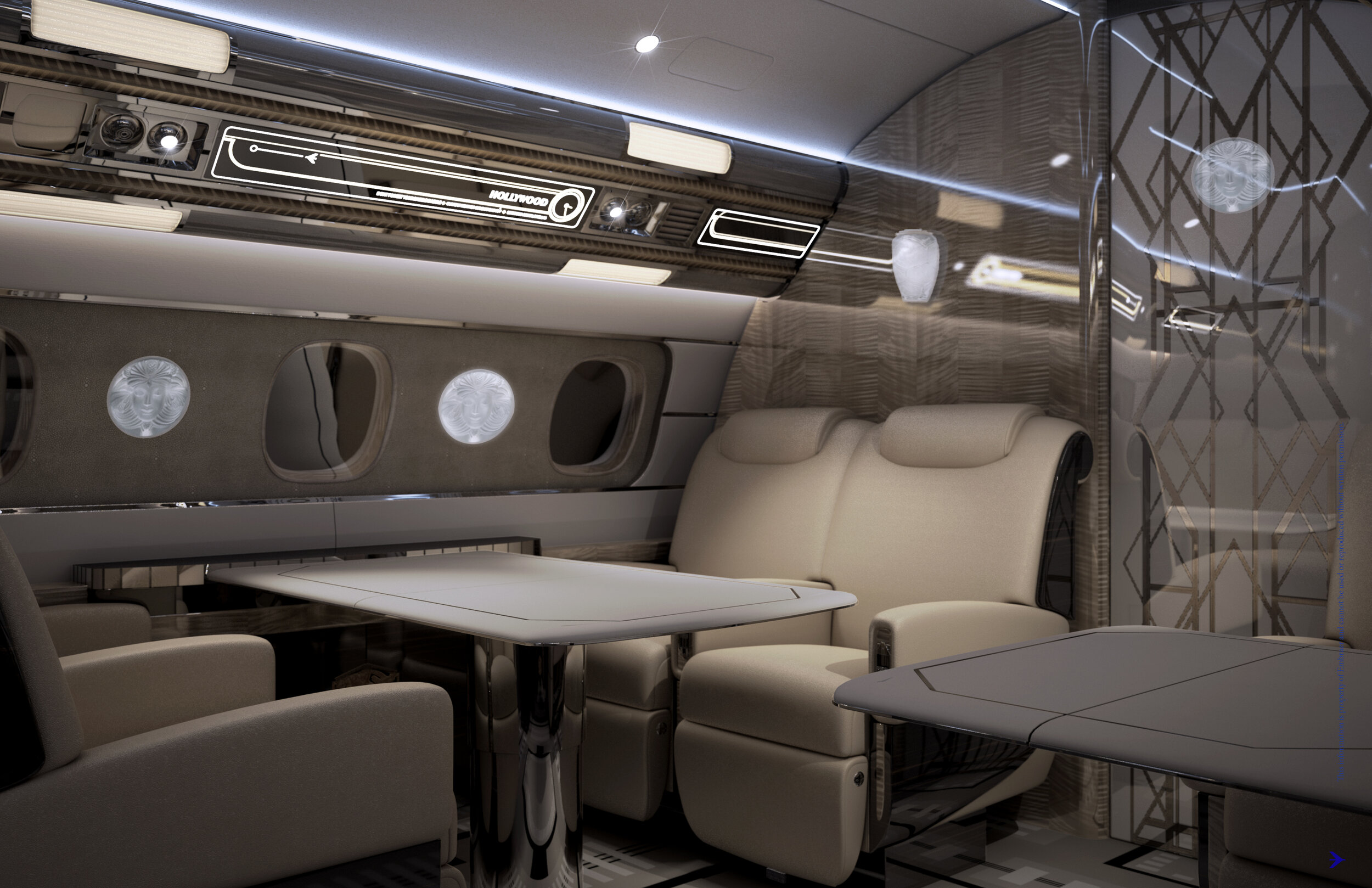
Podcast Music: Five Armies by Kevin MacLeod
Link: https://incompetech.filmmusic.io/song/3762-five-armies
License: http://creativecommons.org/licenses/by/4.0/
Interview Transcript
(please note that, although we strive to make it as close as possible to the original recording, the transcript may not be 100% accurate)
Hello and welcome to a new episode of the Allplane podcast!
Today’s episode with me asking you to use your imagination
Just envision for a second the interior of an airplane that looks like a 1920s art déco Manhattan apartment, complete with the decor and style of the roaring twenties...or...what about replacing the passenger seats with a Japanese tatami? Or having a supersized panoramic window on one side of the cabin?
These are some of the outlandish ideas that have been put forward by our guest today
Jay Beever is the VP of Interior Design at Embraer Executive Jets.
His job is basically to define the concepts and the lines that will be built into the next generation of executive jets, just as a top fashion designer would set the trends for next season, Jay helps set trends in aircraft design
Prior to moving into aviation and to Florida’s space coast, where Embraer executive jets is based, Jay had a successful career as a car designer in California, where he worked alongside some of the most visionary minds of the automotive industry.
I am sure this background will come in handy at a time when the aviation industry is in the cusp of major changes, with the advent of numerous personal air mobility concepts that are essentially like flying cars
We are going to talk with Jay about this as well as about many other aspects of aircraft cabin and executive jet design
Without further ado, let me welcome Jay to the podcast…
-----------------------------------------
-Hello Jay! How are you?
-Good, thank you for having me today to have a conversation about aircraft design and all the cool stuff that is happening!
-Yes, I remember very well when we met on a demonstration flight between Le Bourget and Geneva just ahead of ebace and we flew an Embraer Lineage 1000E and you showed us some interesting designs...some amazing designs i must say! We are going to speak about this later. But first of all let me introduce yourself and the work you do at embraer design ops
-Ok! I am the VP of design operations for Embraer Executive Jets. Our responsibilities are twofold: we have an industrial design team that works on future concepts for the engineering of the canvases that we see and feel in the airplane. And the other part is the customer center design team, a concierge service that seats with the customers and helps them configure, design and tailor the cabin interior. Two under one roof, which allows us an opportunity for immediate feedback, modifications where necessary...this is how we are constructed at Embraer.
-And before that you worked in the automotive industry, right? For the Ford Motor Company
-Yes. I spent 15 years at Ford. I started off in the Dearborn, Michigan, location as a CAD draftsman design engineer, and eventually ended up in the design studios. They were working on Lincoln automobiles and Ford rear wheel drive vehicles which would include the Mustang and the Thunderbird, vehicles like that. At which point, in 2002, I transferred out to California, where I worked in their advanced design studios where I had the chance to work with legendary car designers like Henrik Fisker and Freeman Thomas. Jerry McGovern, America Reichman who's currently head of Aston Martin design, and all those individuals David Woodhouse, head of Nissan design...These are all colleagues of mine that I worked for. In California working on the various Premier Automotive Group vehicles from Lincoln, Jaguar, Aston Martin, Land Rover, and Volvo...and Peter harbor is another individual...who heads the Volvo division still for the company in China. Volvo was an incredible experience there in California working for a lot of individuals who are running the design world in automotive. I really loved it. But getting into aerospace in 2007 was a clear opportunity, because there's so much that this industry could use from the automotive in that sense of craftsmanship, execution, build tooling, the manufacturing processes that would be applicable things like that. So it's been quite a journey.
-Yeah, actually, you know, I mentioned your previous experience with car design because I think we are right now at a time when the let's say that the car industry and the aerospace industry are converging in some ways. I had a chance to write an article for CNN recently that was about the advent of the flying car. It was all about this new concept for personal mobility, personal air mobility, that draws really heavily from the world of automotive, if you want we can talk about later...because you also had temporary, you have come up with some very futuristic designs that go in this line, right? Like the recent Embraer Pulse concept.
-Yes
-It's essentially like a flying car in a way. And also the electrification and how the automotive industry is moving in this direction. And many people in aerospace are not working as well. In electrification. Not everyone is as optimistic as from industry sources. I had a podcast recently with someone that told me that well electrification for some uses, yes, but for some other uses maybe it's still some way off. But anyway...that's something we can touch later when we talk about the concept of design at Embraer. So basically, you are working for Embraer that is a Brazilian company, but you are based in the US, right? Because Embraer executive jets is located in Florida...
-Yes, that's correct. Embraer has been in Florida in the United States for a long time due to the commercial aircraft activities and we have our facilities in Fort Lauderdale, Hollywood airport, but in more recent time within over the last, you know, 10 years, we've had our executive jet headquarters in Melbourne, Florida, the Space Coast and that has been strategic, but quite a coup as well. Because of its location in Florida between Orlando and Fort Lauderdale being a nice destination for customers
-It's near Cape Kennedy…
-Yeah, yeah...What a neat place to be, with the spaceport, Cape Canaveral, Florida, the Space Coast and we're right there! We were able to capitalize on getting a lot of employees from the shuttle missions, when the shuttle missions ramped down, we came in at the same time and were able when lab employees from so we had a really highly skilled technical employee base very quickly. So it's been a wonderful location for us.
-Those who are inspiring companies to come here. The EDC and those responsible for giving incentives have done a great job because the amount of companies that are moving into Melbourne and to the east coast of Florida is tremendous. It's really an economic boom and everybody's having a lot of fun.
-Basically, you are producing designs, not just for the more conventional planes but you also have a very interesting line of design which is more conceptual, which is the one I was referring to earlier. So you have a whole range of ideas...basically what would you do is come up with a theme or a topic and you completely turn the cabin of the executive aircraft into that theme. So just to give you an idea of what this means to our audience. It's like you have a Japanese-themed aircraft, what’s inside it basically looks like a typical traditional Japanese setting, where people can sit on the ground and have very minimal lines very, very clean, very simple...is this sort of aesthetics. Then you have another one which is art deco, and you have all the design elements that evoke 1920s America for example...I'm going to post some pictures of this so that our audience can check it out in the in the podcast notes, but can you explain us a little bit what's the what's the idea behind these sort of very outlandish designs and what's the thought process behind them?
-Oh, glad you asked! I'm especially happy that you appreciate those things that I have done. The thought process is that of conceptual design to inspire sometimes, you know, for instance, when the iPhone came out, many of us didn't realize we needed a phone that had no buttons. And many advisory boards may have told the phone companies to put bigger buttons on, so I can use my gloves and things like that. So the point of that is, companies, OEMs, like Embraer, like Apple, what they've done is develop new features that customers haven't asked for. But challenge the imagination and challenge the status quo, and what we think of as normal to create a new normal. So if we wait for a customer, which does happen, to come in and say I'd like a real exotic looking interior. And let's work on this project, we'll finish the project, that project is very personal to the owner. And we don't show that interior because it belongs to the customer, the individual who bought the plane. So there's not much to really show the world as far as inspiration for what the future could look like or inspiration for work, what capabilities we have. So, as a company, it does as well to come up with concepts on our own, to show what could be and create dramatic subjective opinions, pros and cons, and it's all good, because now we have people debating something that they never knew was there previously. So the philosophy is, is that of, you know, gaining and engaging customer interest based off of the marketed or guerilla marketing advisory committee that people don't really realize their end because we will respond to those comments. And then people become interested in our airplanes because of it. So really it's it's similar to what I was raised with at Ford in the concept car design studios in California is building concept vehicles that will not be built exactly the way they look because in production things have to change but they inspire and drive a DNA or look for the future and and individuals will look at this concept vehicle and say I wonder how those door handles, the features, the body lines are going to be? What's coming in years to come…
-Yeah, that's why see in the fashion fashion industry as well. You have the fashion shows or the runway, all the designs that are shown in the runway, very few of these actually end up being used on on a day to day basis..they are a sort of a blueprint for for other ideas that will become more widely adopted. I was I was very impressed by one of the concepts what which was actually having a window that runs all along the wall of the of the side of the aircraft so you actually have a panoramic panoramic wall where you can you can you can see what's outside and and I was even more impressed when I learned that that's actually feasible with current technology and current regulations! What happened to that concept? Is it still something that might happen in the future?
-The actual panoramic physical analog real, not synthesized panoramic window I believe is a Fokker Systems Technology that BBJ launched a few years ago and showed a concept in an office space inside of BBJ, which was stunning. The window obviously requires cutting through fuselage frames, and reinforcements. So in order to keep the window structurally in place, so it's really a marvel of technology. And that window was inspirational in many ways. For the Embraer piece of that equation of immersing yourself into nature, rather than hiding yourself from it, and trying to protect yourself from it. We basically did the opposite in a sense, we pursued a vertical portrait view window. And the benefit of the portrait view window. vertically is a you know, top down and up view of the earth in the sky you're flying in, but structurally, it's much easier to execute and therefore more available. to customers because the price point once. So in the Kyoto airship that you're referring to the Japanese tailored theme, and on the Sky Ranch concept for the Lineage, we put the vertical window in. So basically it's the size of a type three emergency exits. So a door sized emergency exit you might see inside of a commercial airplane, and we know those work and they're in airplanes all over the place. So structurally safe and easy to execute. But if you fill that emergency exit door size hole with glass, yeah, composite glass, you have an incredible window. So portrait as an up and down landscape or, you know, panoramic being side to side. So this up and down portrait view window was achieved because we put plans and engineering together to execute an observer window for a Coast Guard delivered you ERJ, so one of our commercial ERJ aircraft, the Coast Guard could use that window as they circle the ocean looking, doing search and rescue, they can look down those drawings that engineering work fit beautifully onto the Lineage as long as we stayed forward of the wings far forward of the wing, structurally, that was the best place for it. So the reality is we can execute those large windows on the Lineage. And that's where we put those concepts together the Kyoto airship, and the Sky Ranch to show what that experience might look like.
-Yeah, I'm going to post some pictures because it's difficult to imagine if you haven't seen them on a rendering, but they are really really amazing. I'm gonna make sure they are in the podcast transcript so that everyone can see them. So with the Coast Guard is already in service, this concept?
-Yeah, I'm not sure when it went into service or when It was delivered. But it was the basis for being able to execute that window. And really what happened was we had worked with a super yacht designer from, Fort Lauderdale, Florida named Patrick Knowles. And that was due to a relationship we have with boat international media and Maryland Mauer and she had recommended Patrick Knowles to work with on a concept that would be a yacht like experience inside the big jet. Know what it was going to be at the time but in our brainstorming, you know, we asked the question, you know, Patrick, what, what can we do on a yacht? That in aerospace we'd all be shaking your head saying “No way!” never going to happen. And he said, Well, windows, look at some of these. These super yachts like a the ship Savannah, beautiful boat, massive. It has what they call a NEMA room on either side of the pool, or on the left hand side of the boat. And you can see into the pool in the middle of the boat and you can see under the water to the left side of the window goes below the waterline and above the waterline, like holy smokes. Yeah. Such an amazing experience. So he's like, well, let's come up with a hypothetical customer and that brainstorming, we said, well, what about our good old Japanese friends? They haven't even talked about them in a long time. As far as our market. You know, they're very deliberate, humble, modest, educated people that sometimes don't get a lot of attention. Let's come up with a theme hypothetical theme based off of a Japanese customer who wants to be able to sit on the floor and have dinner but still be able to have an airplane and takeoff and landing seats and everything else needed for flight of course, but if you do that inside of an airplane sit on the floor to give that what would be yacht like experience have my home and my boat. That home experience in the airplane means you're sitting in a bathtub because the windows are up high. So we sketched windows dropping to the floor and like “Okay, let's go see if we can do this!” renderings look beautiful and was an instant hit to the point. My boss at the time Marco Tulio, the CEO of ember executive jets, looked at and said “Jay, we better be able to make this if we publish”, “Oh, we can make it. You need to go to Brazil, and meet with our guys”. So I did, I went down and spent about a week and a half with the engineering team in Brazil, in São José Dos Campos. And lo and behold, we pulled up the engineering and the drawings for that coastguard airplane. And like, that's it. Well, that works on a Lineage and being the DNA of our top down technology, from our aircraft, fuselages, to whatever size are going to be have so many similarities. It worked. And they said “yeah, we can actually do this. The customer wants it and they're willing to pay for it. We'll do it”. And I came back with my get out of jail free letter from engineering saying we can do this. We publish the concept and that's it, serendipitous and wonderful and an experience, so that's the Kyoto.
-The Kyoto it's a Japanese themed interior. And then, there's the Manhattan, which is a New York 1930s style. Then you have also the western that is like, basically it's like a Western movie...I remember they had all this leather, leather saddles all over the place and all this. Yeah. Looked very, very authentic. And then you had Art Deco as well, also 1920s.
-That was the Manhattan. There were Manhattan and Hollywood, Yeah. Yeah.
-Yeah. Those concepts, in particular, take on a very unique experience. Eddie Sato, he's the senior vice president of Imagineering at Eddie Sato, now Sato studios, worked with us on those. And it was about experiential design. And he's the master of explaining experiential design because of obviously his work with Disney, and especially that of Disney Europe, in Paris Euro Disney. That was his major project. And so he really understood, you know, this idea of theming and interior to be an experience, not just a commodity or a necessity. So, back in the latter part of 2012, beginning of 2013, he called me up and said...we've been friends for a long time...And he said “Jay, another year at Embraer, I've been asked by Robb Report to create the ultimate gift for the Ultimate Gift Guide 2013 December edition. So they go through this big list of what you must have and the ultimate gift being the top, best gift. They asked Eddie to design an airplane So, as he called me up and said “Can we do a Lineage?” and I said, “Oh, we will do a lineag”e. So at that point, about an eight week, timeframe, two months, sketched his hands off and came up with a sky yacht. We rendered out with our team in Melbourne, Florida. We have a rendering VR digital animation team. So we built out those images and created what was the sky yacht and it got a tremendous amount of attention. And it was Eddie's opportunity to start looking at aerospace design and my opportunity to get Embraer a brand attention grabbing theme, something so unique, like I want my airplane to smell like pipe tobacco like a 1930s mahogany sailing yacht, but it's got auto land features in it. The latest technology for flying heads up display and its foot for quarterback and was a four for 40. You know, in the NFL, it's like he shouldn't be that fast these two big. That's a Phenom, right? That's our smaller plane. But the definition of de Phenom is something that just amazes us and that's what the Lineage was, it meets the definition as well. So here we were able to gain a lot of attention for an aircraft that would be able to be customized. Many thought that Lineage was only a type certified Embraer offering with a fixed interior. But in reality, it was a green aircraft, which means it could be bought naked without an interior and customized in a completion center, like a BBJ or an ACJ. Yep. Well, many of the world didn't know that. So that thing was exactly for that. And that was what led to a long relationship of these experiential type designs, including the Sky Ranch, it was like, how do we tell the story of oil fracking and Texas meets Brazilian rancher and they come together and create this Western theme. Oh, the Sky Ranch. That's perfect. Let's build that out. But let's change the Floor Plan a bit. Let's make your entry the greeting space of this first room in the aircraft after the vestibule or the entry would be the office with a big window, this room of intimidation where you get to meet with clients and people but they never pass the galley which is right behind that office space at the big window. And after the galley is for more cabin zones of the airplane in a private home space where nobody gets to see it but the owner but he's got an office space up front that he can take people on his airplane and have a galley in between the separated like a giant safe room. So that was kind of that theme and then I had this you know I love art deco. And there's the United States especially has what I call the triangle of art deco: Manhattan, Hollywood and Miami. So I'm like, what, how about the lineage could also be a great charter airplane. So imagine the charter aircraft that the royal family has to have a selfie in or the Kardashians have to have a selfie? I mean, flying on a normal airplane with khaki, tan interior is not good enough anymore. We must be on the Hollywood...Oh, why? Because it celebrates the silver screen, celebrates the 1930s and Art Deco design. And what about the Manhattan? the Chrysler Building, you know, the Empire State Building, the reliefs and mosaics of metal and stone that greet you as you walk in showing the Empire State conquering the world of commerce and leading you know, it's those stories. That means something that could be put throughout these interior...So we executed on the Hollywood in Manhattan airship took a lot of action from Frank, many of the Art Deco designers that worked on the Normandy cruise ship was part of the, the, the influence for some of that not just the cities in the United States, but really the fantasy that went into the Normandy cruise ship and those incredible designers that made it happen. So Edie helped us with that. We hired him, Eddie is an expert on art deco design. So those conceptual aircraft were, you know, a fantastic opportunity for a relationship that works. And it has worked for a long time. So we had a lot of fun with that. So all of that was again for brand and marketing. When a company is trying to get attention, become a household name, and therefore be desired. It has to get that attention somehow and waiting for the years of building the field of dreams can sometimes be too long. You need attention now. And that's what these conceptual designs have done for us. have helped us build our brand visibility around the globe. Yeah, and sales.
-Yeah, it’s certainly a great story! And are you responsible as well for design of the outside of the aircraft like livery and all that? Is that? Yes, the Manhattan the Manhattan design that you mentioned, it also had a special livery it came with a very unique livery, outside paint that was dazzling, sort of, I don't know how to describe it, it looked like a sort of 1940's warship with lines in different scales of gray was really, really unique thing as well.
-Well, yeah, yeah. I'm glad you mentioned that. Yes, we do. To answer your first question. We are responsible for the livery nomenclature, paint scheme designs. The Embraer executive jet corporate paint scheme was part of our mission as well, but the paint scheme in particular for the Manhattan airship was a two fold inspiration. I've always loved those Incredible 1920s and 30s are the you know, the bullet trains the big you know, sleek, Art Deco contemporary looking diesel hybrid trains, yeah from I mean, they always had horizontal lines running down the side. And they had that, you know pinstripe suit kind of a look so I thought I would turn the train vertical and what do you get? You get a new york 1940s and 30s pinstripe suit and it's like okay, that's our art deco city. And this airplane needs a tuxedo paint scheme. And it needs a feel like it's going fast standing still so dark navy blue flag blue paint, with silver pinstripes on it was it and it worked beautifully. It was striking. So that's where the inspiration for the paint scheme came from to match with what the story was. We're trying to tell him the interior as well.
-And it looks like you have looked again at that time, that era to come up with the latest design, right? the Embraer pulse, which is a conceptual aircraft for personal mobility-...and it's unmanned right? It's a sort of “air taxi”, quote unquote, not sure if it's the right word to describe it. And it's inspired as well in some car concepts of the 1930s...the 1920s!...can you tell us about this concept, the Embraer Pulse and what's the philosophy, the idea behind it?
-Sure. The first thing is we do make a deliberate effort to look into history, look back and find those moments of those earthquake moments, those tremors that changed a system or an industry like the 1960s muscle car era in the United States. The 1950s consumer products were vacuum cleaners look like bullet trains and you know 1960s as well for fashion design, the Kennedys Jacqueline Onassis and the fashions that so there's, there are moments like the 1930s that changed an industry. And in that particular case, the 1930s were special because in 1938, Harley Earl worked for General Motors came up with the Buick Y job concept car. And so going back to concepts, what was the purpose? To convince everybody there needs to be a change, conceptually what we have now? Not really, in reality, what we have now is not good enough. We're going to move forward. And what does that direction look like? Where's that flagpole that we're now going to aim for? And that was a Buick Y job concept vehicle. And in 1938, it was so different compared to the vehicles to contemporary vehicles and the 30s, Duisenberg and packers and Rolls Royces. These were all very long, square boxy vehicles. with cash or continental packages with tires on the side, spare tires wrapped in Chrome and beautiful, beautiful cars. But it was not the Buick Y job to be a glide job basically became what the cars look like, in the 1950s and 40s. Inspired. It was the first concept car 1939. Let's jump across the pond to Europe. In Germany, Ferdinand Porsche came up with the type 64, type 64 was absolutely different in every way imaginable, but inspired by aerospace. And they even bragged about having over 2000 rivets on the body. Because this is based off aerospace technology. Obviously the beetle was first but the beetle was not this type 64, type 64 went on a road trip, road race through Europe and then became the inspiration for the 356, so those moments changed things in aerospace. Taking a lesson from that, how can we create a concept vehicle that creates so much attention and buzz and imagination that we want to get there, that we deliberately make product plans to evolve for that purpose to target and meet that location in time in the future. So, again, in aerospace, we're very deliberate. We're very safe. We take the time to certify and build. The aerodynamicists are purposeful. Of course, they want to build beautiful sleek airplanes, and we get that more and more. But the idea of creating a conceptual aircraft from the inside out, that would create a whole new experience for the future really hasn't been done much at all. So being that this was our 50th anniversary this year for Embraer had the idea of, actually, about three years ago, we've been planning for this moment, let's come up with a way to celebrate the next 50 years during our 50 year celebration, reflecting on our past achievements, so not just celebrating what's been done, but look at, man, since we did this, keep an eye on us because we're going to do this and just create this perception, what we know internally as reality, but into the world and marketplace of perception of lean means strong, we're going to get there because we're smart, and the world wants it. So the Pulse concept was that it was okay, what's the future of mobility going to be? Today we hear a lot of dialogue and conversation about personal aircraft ownership diminishing, which makes me very sad. Think of that, but we're entering an era of shared economy, access economy. So how do we bring the price of these things down so more people can access them. Therefore access economy, shared economy, you must not own that yourself. It's not, it's not the right thing to do, you must share it with everyone. But you must rent it out. There's pressure to do that, or is reality that there's always going to be ownership. And especially now in this era of pandemic, people are worried about having other individuals in their airplanes. So the charter and the fractional and some of those things are actually maybe going the other way people want home ownership. So you never know what's gonna happen. So the idea for the pulse was to show that in the future I can go from A to B destination and never leave what I own my personal space, which was the pod portion of the aircraft, and that would allow me to do what…?... oh, I could go to Monaco. Not fly into Nice. I'll go literally to Monaco’s f1 race in my coach. Well, Coach with wheels. Yes, we designed a coach that would accept the pod from the flybox wing design hybrid electric, aircraft autonomous no cockpit vehicle. So you could go from airport to land to destination, and never get out of your vehicle. So that was the whole premise. Yeah, that'd be connected to train systems in the future and other things. Absolutely. So the idea was seamless connectivity without leaving your vehicle, land and air so that the future was that experience. Now who's going to make it happen, Embraer. Why? Because of the top down technology that's going to lead us there. And this Uber air taxi revolution that everybody's searching to execute and how to make happen if that technology over the next 50 years is grown. Boy, look what can happen. So that was the idea. Take 2019 as a moment like 1969 and become the technology job necessary to put us in the next 50 years to the Pulse, the pulse of our future. So there's a purpose for that concept.
-Yeah, actually there is this sort of feeling that the aerospace industry is on the cusp of some important changes. And also changes in the business models and the way that people use aircraft and fly. So yeah, I guess it's the right time to think about radically new concepts that these new technologies would make possible eventually. So, I see one of the themes here also in your designs is actually as you mentioned earlier, kind of the openness, the sort of where you don't get the feeling of being enclosed but more open. So is this also in line with all these biomimicry approaches? trying to imitate nature. What can you tell us about that? Maybe I'm wrong, maybe it has nothing to do. I think some people in the industry working along these lines, making people passengers feeling more at ease in a more,
more open environment.
-Yeah. Biomimicry is key to everything aerospace. I mean, the more we can simulate what's happening in creation and the planet around us, and we reproduce it, the more efficient we become so, like a bird, the structure of the birds bone we've learned a lot from and it's inspired 3d printing of metals to have the honeycomb and criss crossing shapes that might be the inside of a bird bone type structure for lightweight solution. So biomimicry, it's the right thing to do. The typical are the features on a whale's fins and how they spiral through the water going up like a blue whale. Actually speeds it up because it creates deliberate turbulence in the water, which creates air gaps cavitation creates basically air ball bearings on the fins along it to fly through the water faster. So can we create deliberate disruption and fuselage aerodynamics that adjust to allow faster movement more laminar flow based off of disruptive features? Oh, a whale can do it. We can do that as well. So there's a lot to learn. And in that regard, you know, how do you manage solar energy and keep yourself from being bombarded by UV rays. There's another tale to be learned from. There's an ant and I believe it is in the Sahara Desert. This particular ant has the ability to withstand temperatures and heat that no other animal or insect can and it has to do with this triangular shaped hairs there on his body that deflect almost like a stealth fighter. They keep it cool. So How do we do that on an airplane exterior? Well, we don't. On the poles. We didn't put triangular stealth tubes on it, but rather than go glass, because many will say, Oh, it's a glass tube that must be heavy. You can't. It's a nylon. And I gained inspiration from a company that's making transparent aluminum. And what can we do with transparent aluminum? Well, it's much more protective. And it's strong. It's lightweight. And it's a reality, which is crazy, because most wouldn't know. I think it was Star Trek for Scotty came up with a calculation for transparent aluminum so they could transfer the whales back from the future to San Francisco. You know, science fiction. And lo and behold, today, we have it. They're using it for bullet proof systems in the military. And NASA is also investigating and studying it to be used on the space station and rockets and things like that because it's more impressive. resistant. And there's all the other benefits to it, it can be thinner and stronger. So try to get access to a sample of it. And they asked me if I had government clearance and we didn't. So it's top secret stuff they're working on now, but great for 50 years from now, that transparent aluminum can be that fuselage is protective. There's treatment that we can do to it that's going to keep us from being burnt by the sun and the UV rays and all those things that we learn from others from creation and things around us can be applied to that. So rather than synthesizing the world around us and creating giant screens, that really doesn't do a good enough job of telling us what's outside. Let's keep aluminum lightweight, but make it see through. And that way, I don't need a screen to tell me what's happening. I can see the real thing. And it can be a smart technology screen on the inside where it's giving me information of where I'm going on my journey. They can track my eyes and look at controls within the interior and truly be that butler with wings, a servant that we would like in that type of airplane.
Yeah, smart technology and smart approach that I guess it’s underpinning one of the latest initiatives that you launched...it’s an office chair
-yeah
-Can you tell us more about this? You presented it recently...it is called the Paradigma office chair and it is inspired by a design that is present in some of the current Embraer models, so it is not a concept, but something that exists physically in the real world...tell us a bit more, because it looks really amazing, are you planning to sell it as a piece of furniture, separate front he airplanes?
-Yea, I am glad you asked. We (Embraer Design Ops) are now authorized as a service provider to anybody else in the industry or out of it, automotive...anyone that needs industrial design...we can provide it as a service, as other consultancies would do. We take those technologies, our internal execution, and we use them, also...can we design something that can help us grow further, sharpen our talent that we can use back on airplanes? What is the situation we have seen, over the decades, furniture often influences the aircraft. Earlier I mentioned the Kyoto airship, the home experience for that Japanese customer influences the design. Here is the question: what if we reverse that paradigme, therefore Paradgima, portuguese for paradigme. The aircraft of the future, the Pulse, is going to inspire furniture today. So we took the seat out of the aircraft and we designed the pedestal and a track and swivel mechanism...to feel like you are inside a private jet with its movement...because those that fly private jet will know, to reach out for the side, pull a lever...the same experience you may have in an aircraft is also the paradigme office chair, it’s a design from the future that we can have now. If I can’t have the airplane, I can have a piece of it. We use the Bossa Nova-Ipanema line of interiors, this comes as an inspiration...We are prototyping it now, we intend to go live with sales by end of the year, fourth quarter, we got a lot of interest.
-Where are you going to sell it?
-Well, we are going to sell it globally...where are we going to manufacture it? It’s still up in the air, we are currently discussing it, whether we manufacture it ourselves or we license it, we are still in these discussions. But we actually built a mockup, so physically it’s built and this gave us the first hint as to the acceptance. Hopefully by the end of July we’ll have a prototype ready and will go live immediately with it.
-It’s a high tech chair, so apart from looking amazing it is a very sophisticated chair. What’s going to be the price point?
-We don’t know the price point yet and that would be based on final materials and building costs, it will be priced according to the luxury market and comparable chair designs in the past to make sure we get the right target customer.
-Still cheaper to buy the whole plane!
-But it inspires you to get the whole plane in the future! It’s a good brand in marketing. The more you become a household name, the more those that have the resources will want to buy it..this is what we do! And as far as the technology is concerned, we have two versions. One version has cable actuation and easy to move track and swivel features, our less technical but maximizes usability. The second, top-of-the-line version is the one that has, what we are currently studying, capacity switches on the side and in the veneer, so...in the shell there is a capacitor switch that will allow you to slide around. Something similar to an electric assist release we have in the private jet, again authenticity! Like a maglev train, maglev-type technology, frictionless. It has that type of technology, it can glide around when the pin is released, _I don’t feel friction, I feel like I am floating. This is going to be the top of the line, most expensive. The chair works in two directions, mechanical and also the top of the line that can only come from an aerospace company like embraer.
-Amazing! Will keep an eye on this and I am sure there will be more designs coming out of your factory of ideas! I am sure there are going to be some more amazing designs down the line soon...
-Your interest and comments are very appreciated and held in highest esteem because of your experience and knowledge of this industry so I was looking forward to this discussion.
-Thank you so much. It’s been a great pleasure! Maybe when you go on releasing new concepts and ideas we can get you here again in the podcast
-Would love that!
-Thank you very much
-I have to say one more thing as a reflection...thinking back about that flight we were on together I remember when we took off on that lineage we were forced to circle Paris, you remarked that, you could see the ARc de Triomphe, the Eiffel Tower, stunning...it was hard to talk about interior concepts when you had such great views! So thank you for remembering!
-That’s when those extra large windows would have come really handy on that flight! Haha!
-Yeah!
-Thank you!
-Have a wonderful day!
